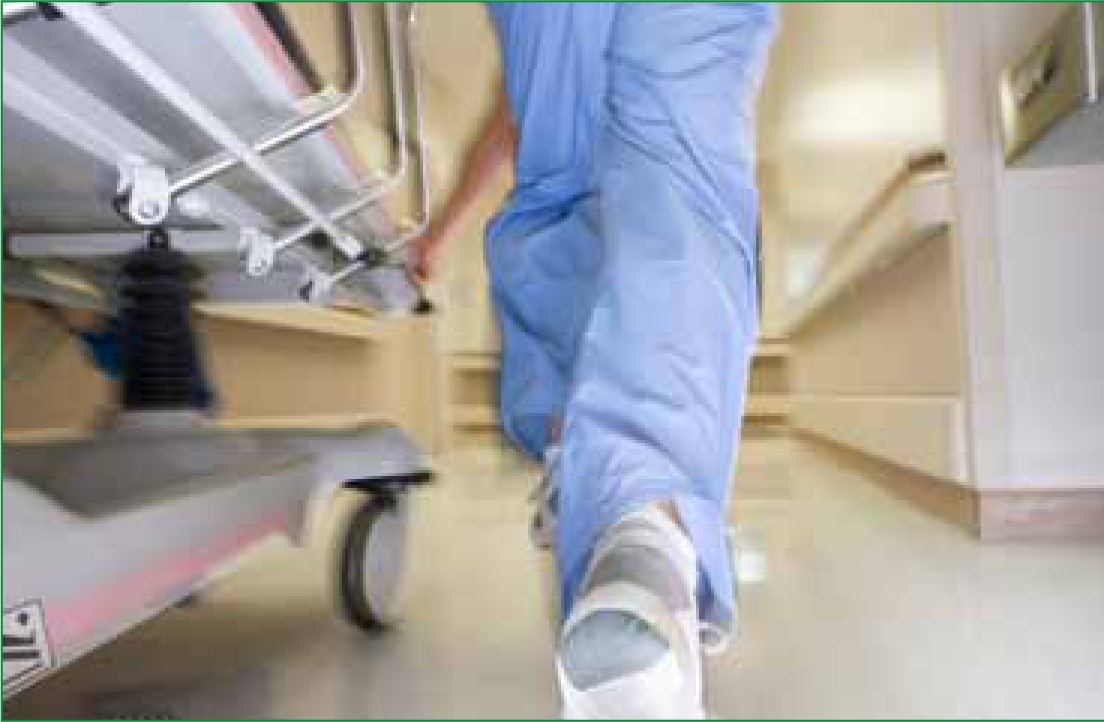

This study aimed to explore handover processes between ambulance and ED staff and to identify factors that impact on this event with a view to making recommendations in order to improve the quality of clinical handover.
The study used a focussed ethnographic approach which facilitates the exploration of specific elements of cultural behaviour rather than exploring a total cultural system as would be undertaken in a classic ethnography.
Methods included; observation of 38 handovers (involving eight student paramedics, 26 paramedics; 30 nurses and ten medical officers), 20 interactive interviews, either individual or in pairs (involving two student paramedics, 20 paramedics; seven nurses and two medical officers), and examination of the handover tools that were being used in one hospital in Queensland, Australia.
The observations were undertaken in a variety of areas in the ED including the entrance known as the ‘ambulance ramp entrance’ (n=20); the resuscitation room (n=3); at the bedside (n=14); or in the waiting room (n=1). The interviews were carried out at a convenient time once the handover was complete.
Data were analysed using constant comparative techniques informed by grounded theory methodology which resulted in the identification of four categories: a) handover process; b) handover content; c) handover tools; d) factors influencing handover.
The researchers identified two different types of clinical handover: i) handover for the non-critical patient which in this study was more frequent and often performed in the ambulance ramp entrance; and ii) handover for the critical patient which was less frequent in this study and carried out just outside (as well as within) the resuscitation room.
The paper provides useful diagrams summarising the complexities of both types of handover which supplement the narrative and clearly delineate the potential and actual areas where the ambulance crews were likely to have to repeat the same information during these events. Factors which influenced the quality of the handover were identified as constant interruptions; workload pressures and waiting time; working relationships including whether the staff were known to each other and whether they had confidence in each other’s professional competence; the point at which the responsibility for the patient’s care was transferred from ambulance to ED personnel.
Some of the limitations of the study include; the use of only one site which limits potential to generalise the findings; the use of overt observation could have influenced the participants’ behaviour as they knew they were being observed during the handover process; and lack of video recording of the event meant that the observer had to rely on recall and their own fieldnotes which could have limited the detail of the collected data.
The authors highlight the importance of good quality and effective clinical handover to ensure that the patient’s transition from the ambulance service to the hospital is seamless and safe. They recommend increased inter–professional education so that everyone becomes familiar with each other’s professional cultures and working practices, and they suggest continued examination of tools and instruments designed to assist in the process of clinical handover.
There are differences between the healthcare systems in the UK and Australia, but there are also significant similarities. Although not completely transferable to the UK experience, this paper raises some interesting points for consideration in UK Paramedic practice in relation to patient handover between different healthcare professions in a variety of healthcare settings.
Wanted: reviewers for Spotlight on Research
We are always looking to expand the number of reviewers contributing to this section of the Journal of Paramedic Practice.
If you would like to be involved, then please contact me. You may have a paper in mind already, and, if this is the case, email me first to make sure that someone else is not already reviewing the same paper as it will prove rather frustrating for you to write a review and then find out, after all the hard work, that your review will not be published as it is already in press having been reviewed by someone else.
If you do not have a paper, that is not a problem. Once you and I have made initial contact, I can find out what your professional interests are, and then I can source you an appropriate paper.
Spotlight on Research aims to review, in about 600 words, research–based papers that have been published in other journals. Clearly, in this length of review, we cannot produce a depth critical analysis, but neither are our reviews just a simple repetition of the paper’s abstract.
The idea is to fag up key issues from published papers, to construct an overview of the central elements of the study including some reference to the study’s selected methodology, and to highlight the relevance of the findings to the paramedic profession.
These reviews provide a useful resource for our readers who may not have sufficient time to review all journals every week or every month. Our reviews inform other people about studies that have been undertaken in the UK or in other countries which have relevance to unscheduled urgent care and paramedic practice. People read our reviews and if it is an area of interest to them, they may well be inspired to access the full paper.
I will give you as much or as little support as is required to help you construct a publishable review. So do not be put off because you have never published before, just remember that everyone has to start somewhere. If you are new to writing we will work together to develop the review, editing and refining your draft review until we have a product that we both agree is ready to be shared with our readers.
Working on a review is a good introduction to the world of writing for publication as well as something that more experienced writers can do to augment their portfolio of publications. This type of activity is useful to the paramedic profession, great for your professional development, and it makes a significant contribution to your own CV.
So, get cracking and email me at J.Williams@herts.ac.uk and you could be in press within the next six months.
